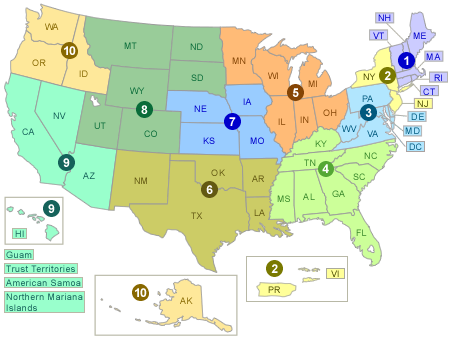Pollution Prevention (P2) at Work
Take Action at Work
Environmental Management Systems (EMS) can be used by any business or facility to reduce their environmental footprint. The plan can reduce the impact of your energy and water use, waste generation, natural resource depletion, and pollution associated with operating your facilities.
You can take action at work by improving energy efficiency and planning environmentally aware events such as meetings and workshops.
Your business can become more energy efficient by choosing office products (computers, faxes, etc.) that have earned an ENERGY STAR label.
EPEAT-registered products are manufactured with fewer toxins, and are designed to be easily recycled. EPEAT-registered products also meet the latest ENERGY STAR® specifications, so they can help you lower your energy use.
Plug Into eCycling where you can find out how to reduce the impacts of electronic products by donating or recycling your obsolete electronics.
Pollution Prevention Assistance
E3: Economy, Energy and Environment is a technical assistance framework helping communities, manufacturers, and manufacturing supply chains adapt and thrive in today's green economy.
The Toxics Release Inventory (TRI) collects information to track industry progress in reducing waste generation and moving towards safer waste management alternatives under the Pollution Prevention Act of 1990 (PPA). To view P2 data for an individual facility or locality, use the TRI Search bars.
Regional P2 Resources

P2 for Government at Work
Environmentally Preferable Purchasing (EPP) helps the federal government "buy green," and uses the federal government's enormous buying power to stimulate market demand for green products and services. This web site can help green vendors, businesses large and small -- and consumers.
Federal Green Challenge is a national effort under US EPA's Sustainable Materials Management Program, challenging EPA and other federal agencies throughout the country to lead by example in reducing the Federal Government's environmental impact.
Climate Change Program's Best Practices Framework Exitoffers suggestions for local action to reduce greenhouse gas emissions in ten areas for agency operations and the community at large. Suggestions are designed to reflect the variation among cities and counties and offer a variety of options ranging from simple steps to more complex projects.
National Association of State Energy Officials (NASEO) Exit is the only national non-profit organization whose membership includes the governor-designated energy officials from each state and territory. NASEO was formed by the states and through an agreement with the National Governors Association in 1986. The organization was created to improve the effectiveness and quality of state energy programs and policies, provide policy input and analysis, share successes among the states, and to be a repository of information.
Partnership for Sustainable Communities Exit provides access to research and reports on communities that are working with HUD, DOT, EPA, and other Federal agencies to invest in transportation, affordable housing, and environmental protection.
